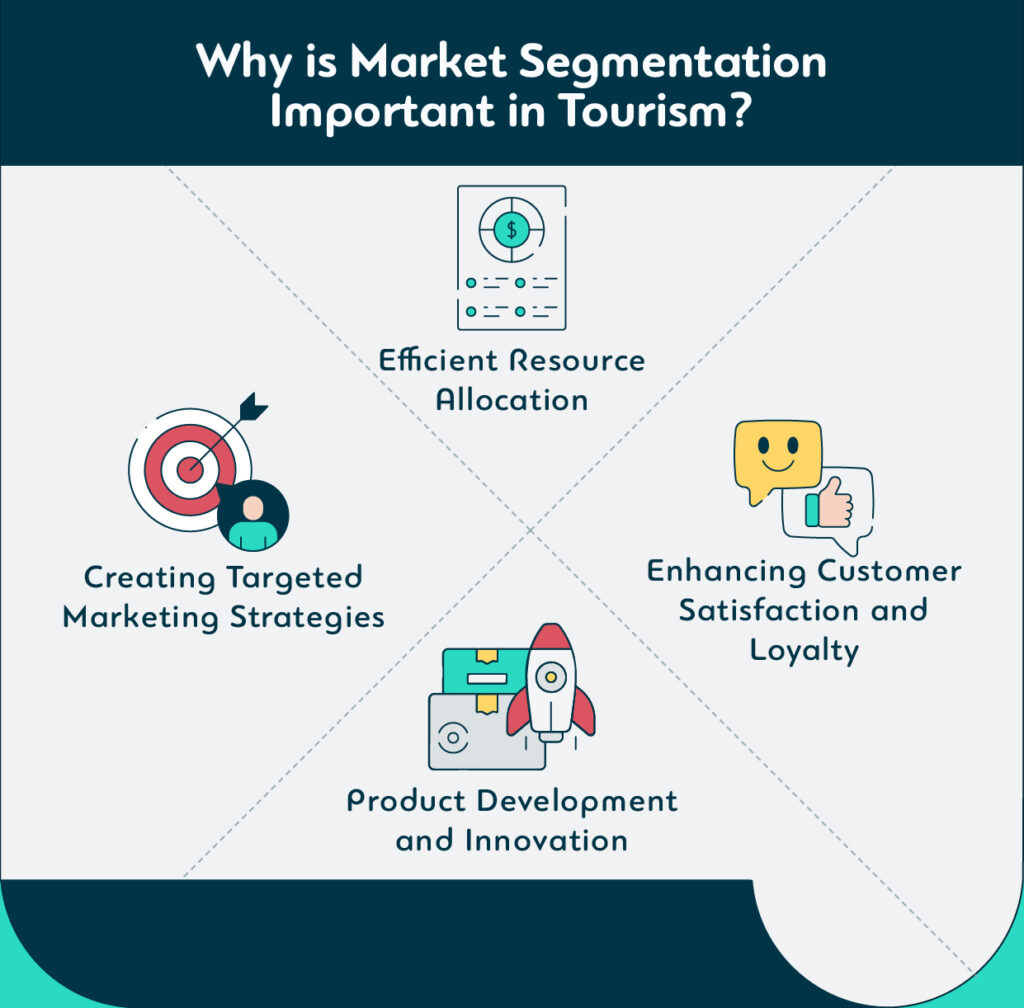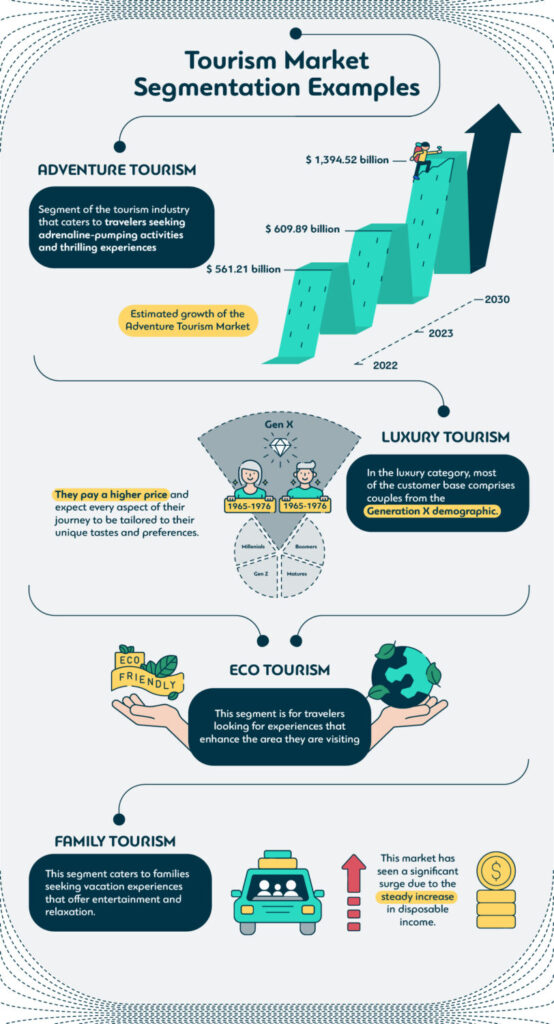What is Market Segmentation in the Tourism Industry?

The Role of Market Segmentation for Online Travel Agencies (OTAs)
The Benefits of Effective Market Segmentation
The Benefits of Effective Market Segmentation for End Users
Products and services are consumer-centric Segments feel seen and heard Consumer needs exceed expectations Improve travel experience
The Benefits of Effective Market Segmentation for OTAs
Targeting the right consumers Offer personalized travel products and services Identify new and unmet needs Identify unexplored segments Differentiate from the competition
Why is Market Segmentation Important in Tourism?

1. Creating Targeted Marketing Strategies
2. Efficient Resource Allocation
3. Product Development and Innovation
Sell at a higher rate based on what customers are willing to pay Sell at a lower rate based on what customers are willing to pay
4. Enhancing Customer Satisfaction and Loyalty
To evaluate the potential of a segment, you can review 5C’s:

Customer: Is the chosen segment ‘attractive’ in terms of profitability? (aka how much are they willing to pay) Condition: How big is the market size and growth rate? (market potential) Cost: How much does it cost to reach the chosen segment? (customer acquisition cost) Company: Is this segment compatible with the company’s objectives, capabilities, and resources? (company/segment fit) Competitors: Who are the main competitors? (Global OTA market share)
What are the 4 Segments of the Tourism Industry?

1. Geographic Segmentation
2. Demographic Segmentation
3. Psychographic Segmentation
4. Behavioral Segmentation
Tourism Market Segmentation Examples


